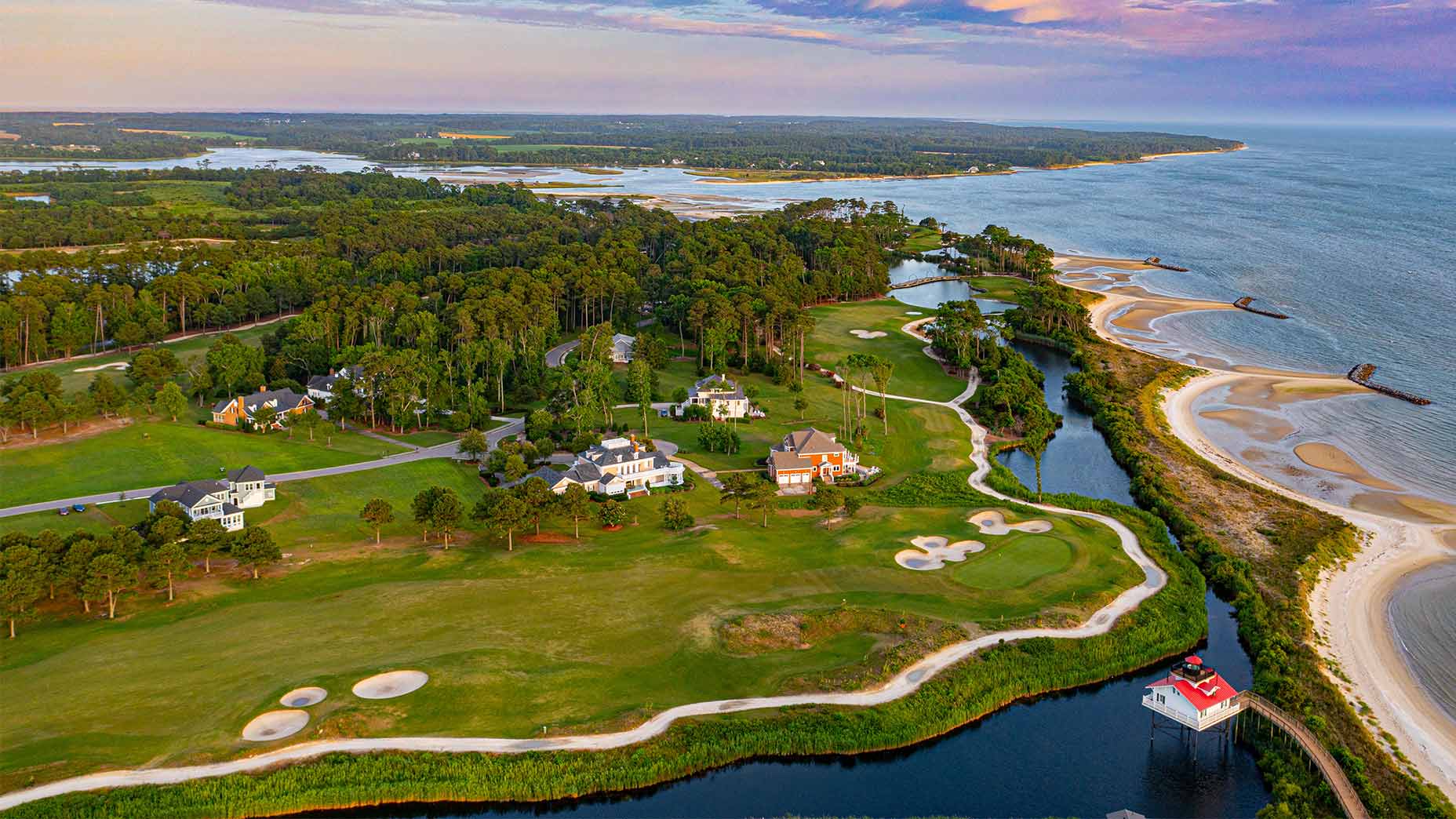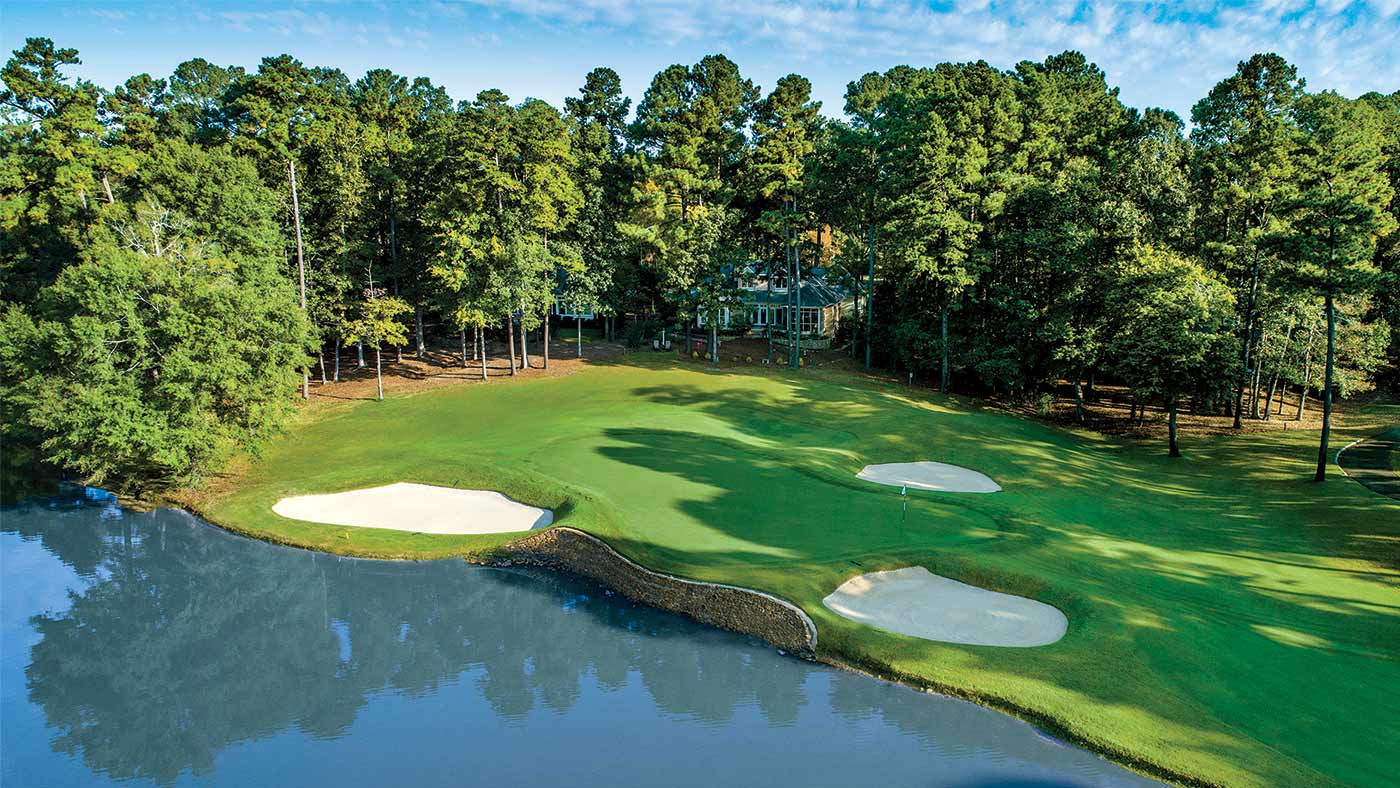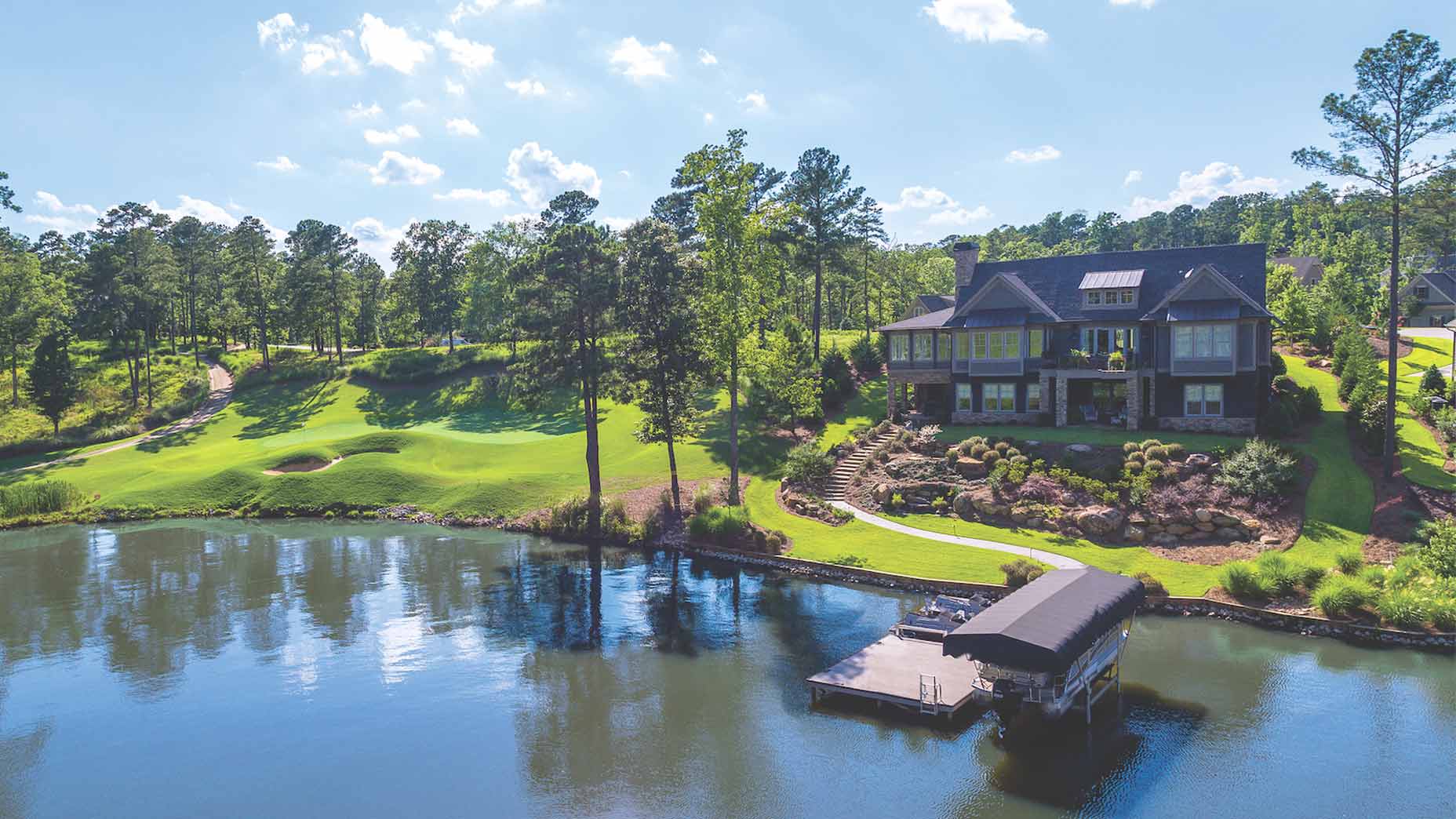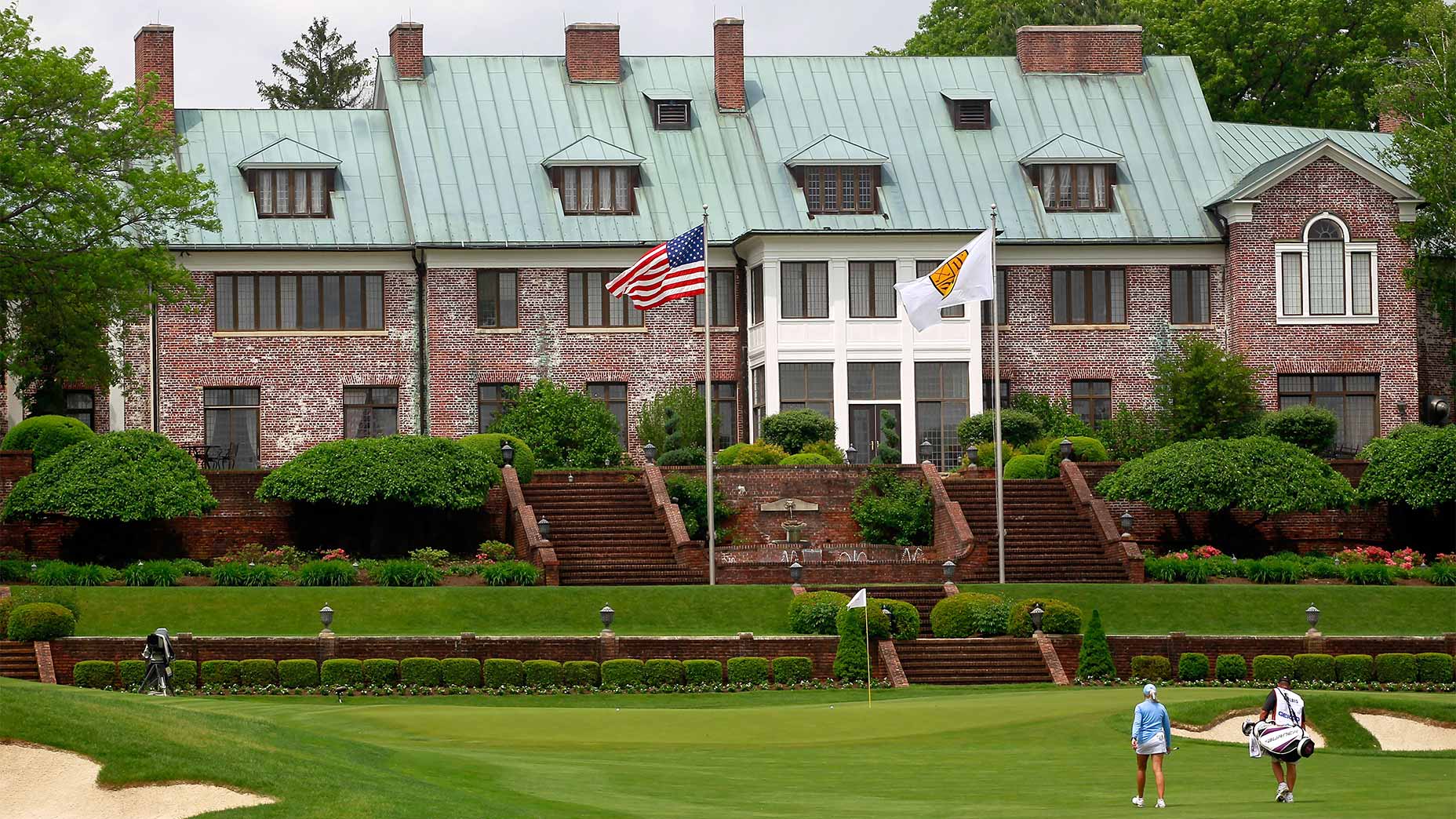Whoever said the best things in life are free wasn’t a golfer. Dropping dollars on the game we love is a price we’re always willing to pay, as long as the price is right. That’s why we dubbed the latest issue of GOLF Magazine “The Money Issue” and dedicated dozens of pages to smartly investing in your game. You can pick up the Sept./Oct. issue of GOLF Magazine at a nearby store, or subscribe here.
As a tax attorney in New York City, Peter Pront spent three decades squeezing golf into his day. In good weather, he and another young partner would take a taxi at 5:30 a.m. to Mosholu Golf Course in the Bronx, walk 18 holes and still be at their desks by 9:45. Years later, after joining private Saint Andrew’s Golf Club in suburban Westchester, he’d drive in dawn’s early light the half-hour from his Manhattan apartment to make the weekend’s first tee time. He could play, shower and be home before his children finished breakfast. Visiting his in-laws’ home on Long Island, across from the 54 holes of Eisenhower Park, was even easier.
“Everyone wanted to play the Red course, which hosted the 1926 PGA,” Pront says. “I’d play the White or Blue and be back in three hours.”
When it finally came time in his career that he could start thinking about more golf and less work, Pront used the same analytical approach to researching a retirement home.
“I made a list of East Coast communities south of Virginia and north of Miami,” he says. The plan was to visit each finalist, and then he and his wife, Marsha, would select their oasis. But plans, like tee shots, sometimes have a mind of their own.
You never want to be at a club where people who live around the course don’t join the club.
Many golfers dream of this moment, when they make the game central to their life. But the sheer scope of the decision can create stress beyond the worst first-tee jitters. The options are almost endless.
You want to move to a golf community. Fine. But where? And what amenities are most important to you? Want to buy a house somewhere warm and join a private club? Cool — just make sure you understand the carrying costs and possible assessments. What about, for variety’s sake, moving to a town teeming with daily-fee courses? That could work — if you can navigate peak times when the tee sheets (and fairways) fill up.
“When you’re looking at a decision like this, you’re doing a basic cost-benefit analysis and reviewing the pros and cons,” says Peter Heilbron, founder of Trace Wealth Advisors in Los Angeles and a member of Lakeside Golf Club.
In the wake of the pandemic, it’s a decision that has become more real for more people. Rounds played are up everywhere, according to the National Golf Foundation. And it’s been a boon for retirement properties.
“Golf communities were going downhill, but that has changed dramatically,” says Deborah Friedland, managing director in the real estate group at the accounting firm EisnerAmper, where she has advised clubs like Sea Island. “The communities that offer golf as an amenity are now going gangbusters.”
Why joining an exclusive golf club isn’t as unrealistic as you might thinkBy: Paul Sullivan
Take Reynolds Lake Oconee, outside of Atlanta, Ga. Sales in the community — which features six golf courses — were up 30 percent in 2020, says Dave Short, senior vice president for strategic planning for marketing and sales. And people who owned lots for years began building on them — a reaction to the Covid crisis and how it changed our way of living.
“Their time lines have accelerated,” Short says. “They’ve realized they can work from home. Plus, we’re one flight from anywhere in the country.”
While there are favorable tailwinds to buying in a golf community, there are also key considerations before you go all-in.
Timing, for starters. Can you move to your new golf home now? If not, how often might you use it? Ed Reitmeyer, a partner at Marcum, a national accounting firm, and a longtime member of Philadelphia Cricket Club, has thought about getting a place in Scottsdale, where a good friend belongs to Whisper Rock. But he and his wife have at least another decade of being deskbound.
“I don’t think it works without big chunks of time available,” Reitmeyer says. Instead, he counsels clients like himself to consider national memberships. Clubs like Boston Golf Club, Prairie Dunes in Kansas and California Golf Club all offer long-distance memberships at significantly reduced rates.

Ownership structure is another major consideration with golf course communities. Most are set up as a homeowners’ association, which will take care of all property maintenance but can also fine you for violating (sometimes obscure) rules.
A community can also be noisy. There may be privacy concerns. And don’t forget those errant shots that can trigger repair costs or insurance claims.
On the other hand, moving to a golf community offers an instant set of friends and golf partners. Joe McLean, a former professional basketball player who now advises athletes and other high-net-worth individuals through his firm Intersect Capital, suggests a simple litmus test: “You never want to be at a club where people who live around the course don’t join the club. That’s not a sign of a great club.”
If instead you’re contemplating a stand-alone private golf club, you again need to understand the ownership structure. Is it an equity club — meaning you can get back a portion of your initiation fee if you leave? Also, exactly who owns the club? The members themselves? A company like Troon or KemperSports? A single wealthy individual? Member-owned clubs almost invariably mean enduring club politics, but on the bright side no one will have an outsize voice.
A corporate-owned club, meanwhile, is run to turn a profit. That can be good (efficient operations) or bad (open tee times sold to the public).
Then there are the exclusive clubs owned by your average billionaire. Membership provides the kind of platinum-level maintenance and amenities that only a financial titan can provide. But it also can subject you to the owner’s whims. Think “taxation without representation.”
McLean, who belongs to Diablo (Calif.) Country Club, a mile from his home, as well as Monterey Peninsula Country Club, has a set piece of advice for all clients considering their first club: Make sure you feel comfortable there. Some lean in on strict rules and dress codes; others, like Discovery Land Company clubs, are loosey-goosey. The vibe needs to work for you.
McLean also walks clients through what they’ll get for their initiation fee. “Ask yourself, ‘Am I going to be there for the long term or a shorter term?'” The bigger the outlay, the longer the term should be. Nonbusiness types should definitely Google the word amortization.
As with all personal finance issues, planning early gives you more options. If nothing else, you have time to change your mind. That’s the story of Donna and Rob Brown, married doctors from Richmond, Va. Back in 2000, learning to play golf and with young children, the Browns bought waterfront land on Virginia’s Eastern Shore. After a few years, they joined Bay Creek, a development in Cape Charles with courses by Jack Nicklaus and Arnold Palmer.
Doing so made them realize they preferred living closer to town, so they sold the land and bought a plot in Bay Creek. After spending more time at the club, they decided to buy a house overlooking the second hole on the Palmer course. “Our interest in golf deepened, and that drove changes in where we wanted to live,” Donna says.

As for the Pronts of New York, they eventually embarked on an eight-city golf-home tour, but, in the end, emotion trumped all of Peter’s rational planning. The first town on their list was Chapel Hill, N.C., where they toured five different communities, including the Governors Club, with a 27-hole Jack Nicklaus Signature Course. “We were sold at the gate,” says Pront. They closed on their home a month later.
“It was just ideal,” he says. “I’ve always loved being around golf. Now I can look out on the 11th fairway and watch everyone hit their tee shots.”
While Pront has been able to play all the golf he’s wanted to and spend more time with his wife, he also found a way to add another 10 years to his legal career.
“I had more time to myself, and I became much more efficient,” he says. “But I didn’t tell my firm how much golf I played because they paid me a lot of money. And I didn’t tell my friends how much money I made because they saw how much golf I played.”
Here’s hoping everyone’s dream golf home works out so well.











